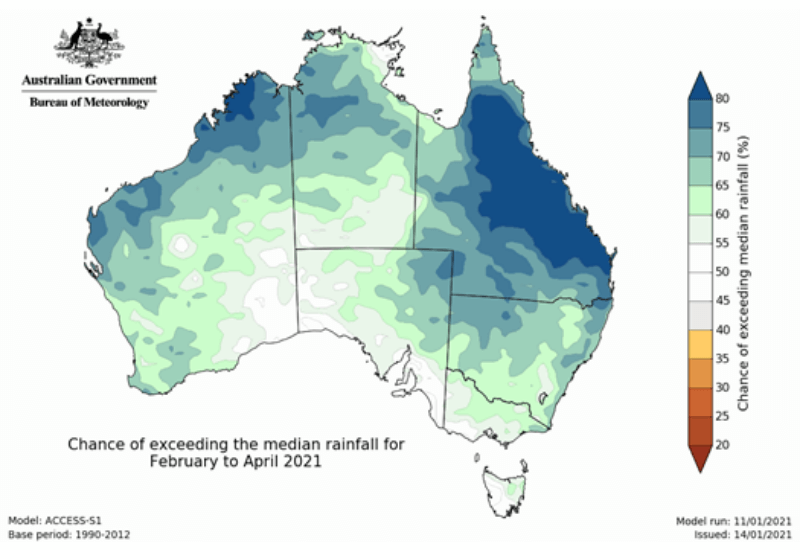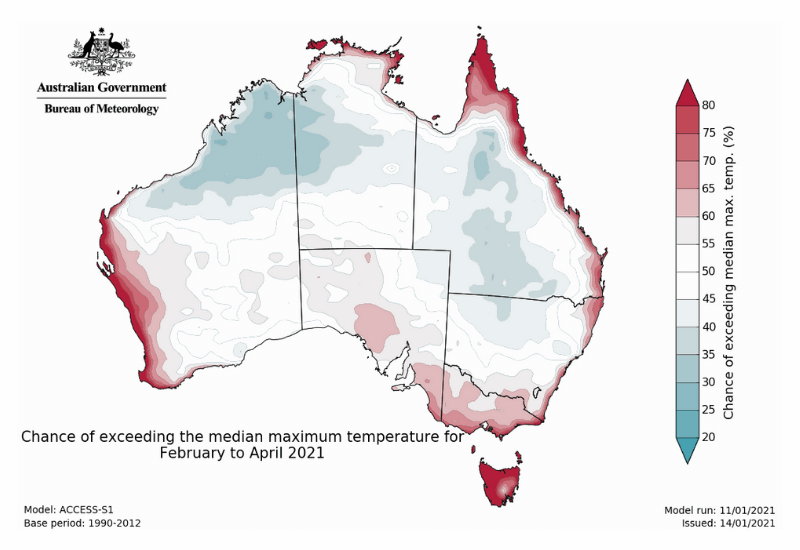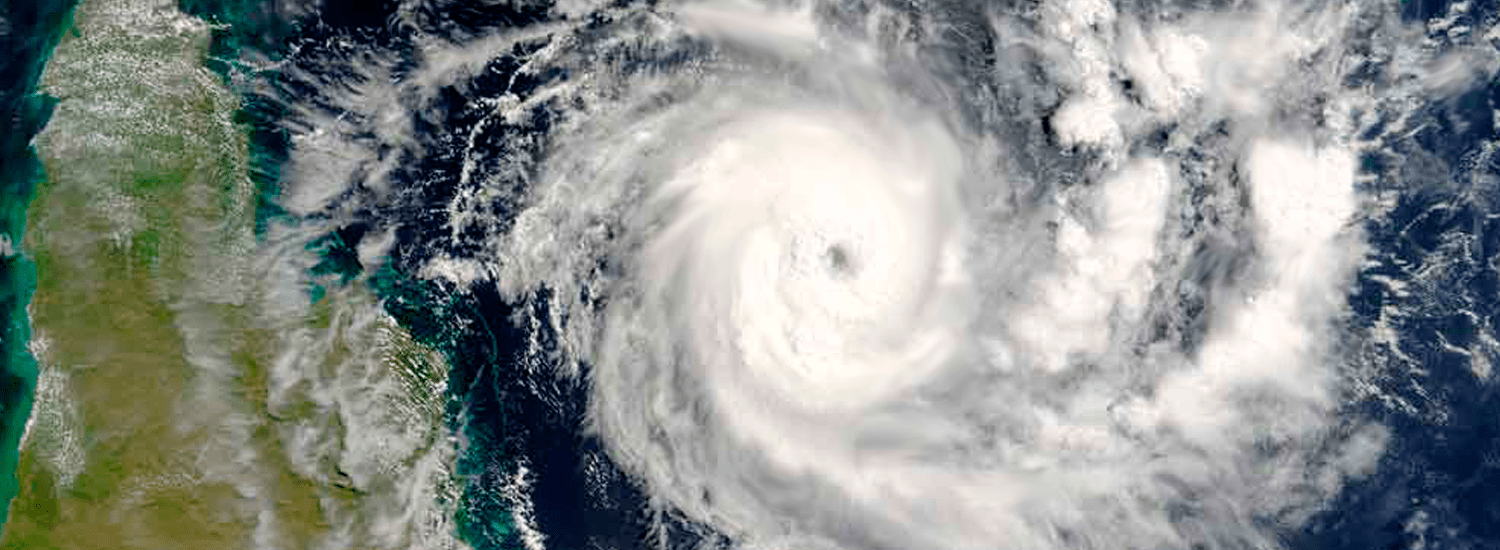BOM’s first 2021 weather outlook reveals risks for homes and businesses
- The Bureau of Meteorology (BOM) weather outlook indicates higher-than-average rainfall and temperatures bringing risk of flood and fire
- Increased cyclone activity likely thanks to La Niña weather conditions
- Take practical steps to reduce potential damage to your home or business.
The variable – and often extreme – weather in Australia can have a major impact on many aspects of our lives. From bushfires to storms, the weather can cause disruption to our homes and our businesses, so it pays to know what’s coming.
Already this year we’ve seen high winds, storms and a deluge of rain in various parts of the country, courtesy of La Niña – but what else does the first few months of 2021 in have in store?
Heavier than normal rainfall predicted
According to the Bureau of Meteorology (BOM) La Niña is still underway in the tropical Pacific but it has likely reached its peak. However, the BOM warns that it doesn’t mean its influence on rainfall has peaked1.
Across the country, it’s set to be a wet few months, particularly in northern areas. The BOM says there’s an 80 per cent chance of above-average rainfall in much of Queensland and parts of northern Western Australia between February and April, while for New South Wales, northern Western Australia and the Northern Territory there’s more than a 65 per cent chance of above-average rainfall1.
Large parts of the country will welcome the rainfall, of course, with many areas coming off severe drought and water shortages. In southern Australia, however, while the predictions are for near-average rainfall, it isn’t likely to be enough to make up those rainfall deficits that have built up over recent years1.
With heavier-than-average rainfall, the chances of property being damaged or flooded may increase. One of the key ways to minimise the risks of water damage to your property is to ensure guttering and downpipes are kept clear of debris and blockages.
Related article: How to prepare for a storm

Image credit: Bureau of Meteorology (BOM), 2021
Warmer days and warmer nights
Over the coming three months, temperatures in many areas of the country – including the south-west, northern and north-eastern coasts, Tasmania, much of Victoria and south-eastern South Australia – are likely to be higher than average, while parts of the Kimberley and inland Queensland are likely to experience lower-than-average temperatures1.
Mean minimum temperatures, however, are very likely to be higher than the long-term mean across the majority of the country1.
The combination of rain and warmer temperatures can lead to an increased risk of grassfires1. And, in areas, such as south-east Queensland and south-west Western Australia, where drought conditions have intensified2, that could be very dangerous indeed.
While bushfires by their nature are unpredictable, there are things you can do to protect your home and safeguard your commercial building to reduce the potential impact of a bushfire.
Related article: How do most bushfires start in Australia

Image credit: Bureau of Meteorology (BOM), 2021
Increased cyclone activity
Australia’s tropical cyclone season runs for six months of the year, to the end of April, affecting Western Australia, the Northern Territory and Queensland. On average, there are between nine and 11 tropical cyclones each year in the Australian region, four of which will cross the coast3.
Thanks to La Niña conditions, however, there’s a 66 per cent3 chance we’ll get more cyclones this season – and they can cause major damage to your home or business.
Already this year, Western Australia has experienced its first cyclone – a category three event while at the time of writing, the category two tropical cyclone Kimi was predicted to affect the Queensland coast and northern NSW, with severe thunderstorms, damaging winds and flash flooding predicted for mid to late January4.
Even if a tropical low doesn’t produce a cyclone, it can produce heavy rainfall, high winds and flooding, as can tropical lows that are the remnants of older cyclones3.
This can result in cyclone-like impacts being felt in southern areas of the country that don’t experience cyclones themselves3.
High winds, heavy rainfall and thunderstorms can all cause significant damage to property. Here are some preventative measures you can take to minimise the impact.
Related article: Our guide to preparing for a cyclone
Can you weather the storm?
It’s a smart move to check your home and building insurances regularly to make sure they’re up to date and you have the right levels of cover in place.
For example, over the past 12 months, home renovations have hit a four-and-a-half-year high5, which may have increased the value of your property. Other people, meanwhile, may have received expensive Christmas gifts, or spent money previously allocated to international travel on some new home furniture and goods, which may have increased the value of contents.
Either way, taking the time to double-check you have the right levels of cover for your property will help you weather the storm should you need to.
If you own a business, having a solid business continuity plan in place can also help minimise the impact of any interruption.
Related article: Home owners how to avoid underinsurance
Find out more about QBE's home insurance and business insurance.
1 http://www.bom.gov.au/climate/ahead/outlooks/
2 http://www.bom.gov.au/climate/drought/
3 http://www.bom.gov.au/climate/cyclones/australia/
4 https://www.dailymail.co.uk/news/article-9158481/Wild-weather-Terrifying-thunderstorms-threaten-unleash-Australia.html
5 https://www.abs.gov.au/statistics/industry/building-and-construction/building-approvals-australia/latest-release










